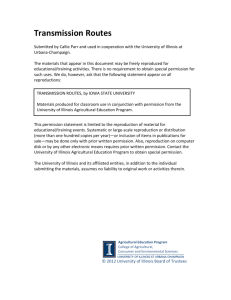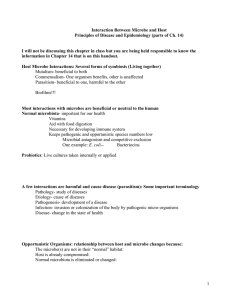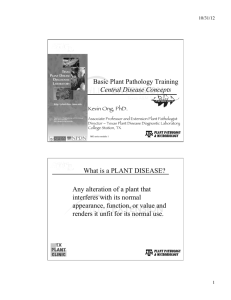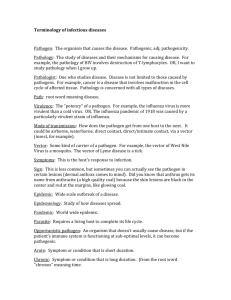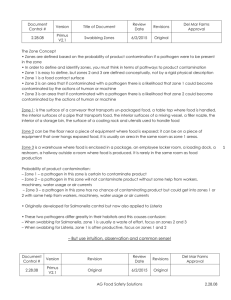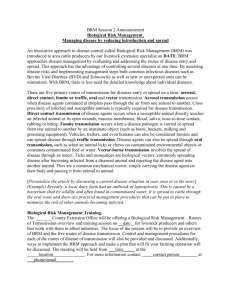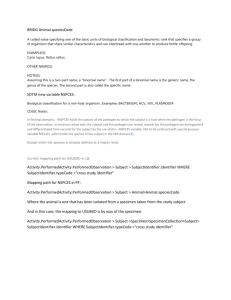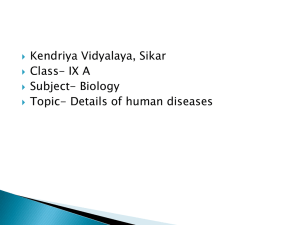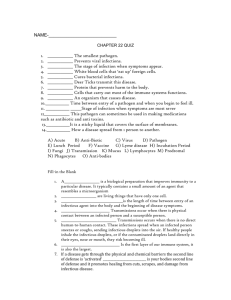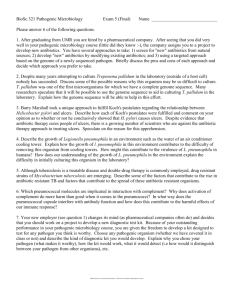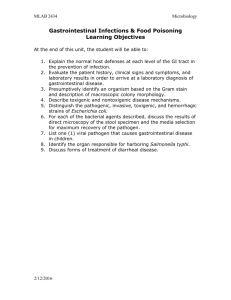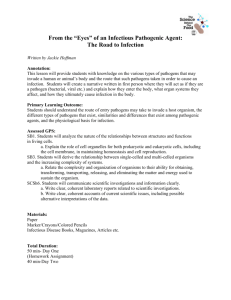Routes of Disease Transmission - The Center for Food Security and
advertisement
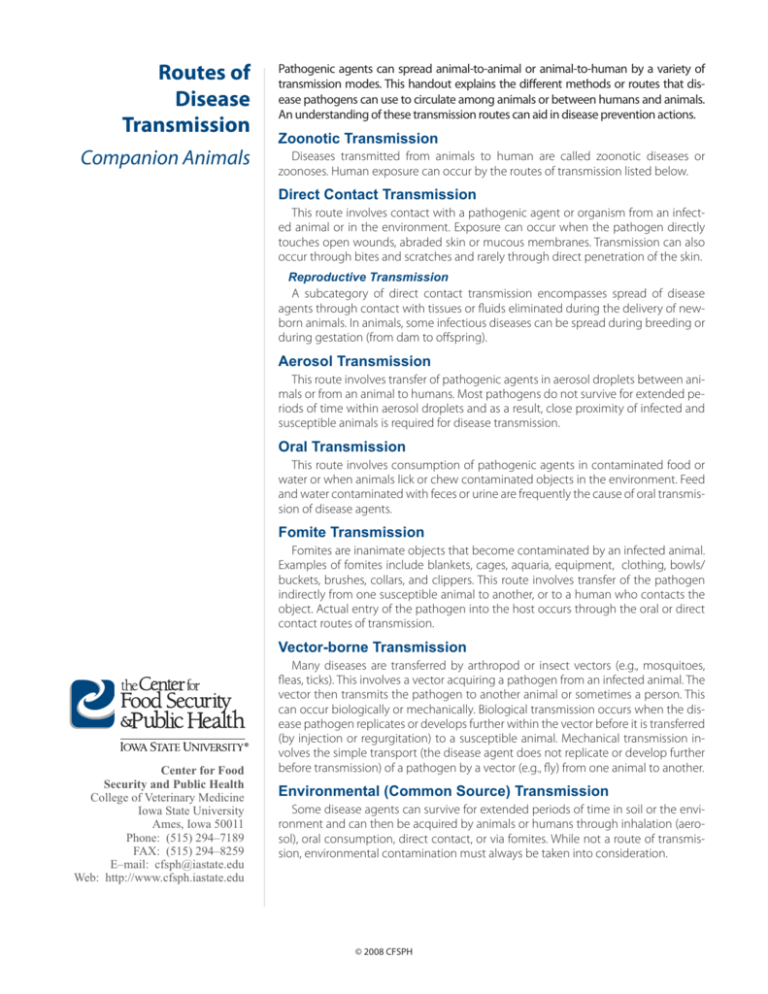
Routes of Disease Transmission Companion Animals Pathogenic agents can spread animal-to-animal or animal-to-human by a variety of transmission modes. This handout explains the different methods or routes that disease pathogens can use to circulate among animals or between humans and animals. An understanding of these transmission routes can aid in disease prevention actions. Zoonotic Transmission Diseases transmitted from animals to human are called zoonotic diseases or zoonoses. Human exposure can occur by the routes of transmission listed below. Direct Contact Transmission This route involves contact with a pathogenic agent or organism from an infected animal or in the environment. Exposure can occur when the pathogen directly touches open wounds, abraded skin or mucous membranes. Transmission can also occur through bites and scratches and rarely through direct penetration of the skin. Reproductive Transmission A subcategory of direct contact transmission encompasses spread of disease agents through contact with tissues or fluids eliminated during the delivery of newborn animals. In animals, some infectious diseases can be spread during breeding or during gestation (from dam to offspring). Aerosol Transmission This route involves transfer of pathogenic agents in aerosol droplets between animals or from an animal to humans. Most pathogens do not survive for extended periods of time within aerosol droplets and as a result, close proximity of infected and susceptible animals is required for disease transmission. Oral Transmission This route involves consumption of pathogenic agents in contaminated food or water or when animals lick or chew contaminated objects in the environment. Feed and water contaminated with feces or urine are frequently the cause of oral transmission of disease agents. Fomite Transmission Fomites are inanimate objects that become contaminated by an infected animal. Examples of fomites include blankets, cages, aquaria, equipment, clothing, bowls/ buckets, brushes, collars, and clippers. This route involves transfer of the pathogen indirectly from one susceptible animal to another, or to a human who contacts the object. Actual entry of the pathogen into the host occurs through the oral or direct contact routes of transmission. Vector-borne Transmission Center for Food Security and Public Health College of Veterinary Medicine Iowa State University Ames, Iowa 50011 Phone: (515) 294–7189 FAX: (515) 294–8259 E–mail: cfsph@iastate.edu Web: http://www.cfsph.iastate.edu Many diseases are transferred by arthropod or insect vectors (e.g., mosquitoes, fleas, ticks). This involves a vector acquiring a pathogen from an infected animal. The vector then transmits the pathogen to another animal or sometimes a person. This can occur biologically or mechanically. Biological transmission occurs when the disease pathogen replicates or develops further within the vector before it is transferred (by injection or regurgitation) to a susceptible animal. Mechanical transmission involves the simple transport (the disease agent does not replicate or develop further before transmission) of a pathogen by a vector (e.g., fly) from one animal to another. Environmental (Common Source) Transmission Some disease agents can survive for extended periods of time in soil or the environment and can then be acquired by animals or humans through inhalation (aerosol), oral consumption, direct contact, or via fomites. While not a route of transmission, environmental contamination must always be taken into consideration. © 2008 CFSPH
